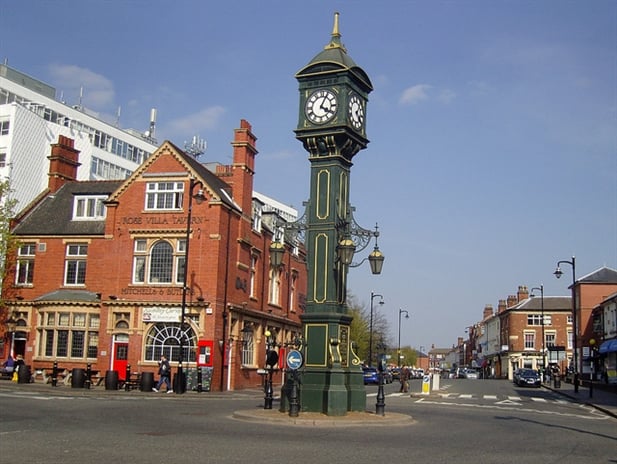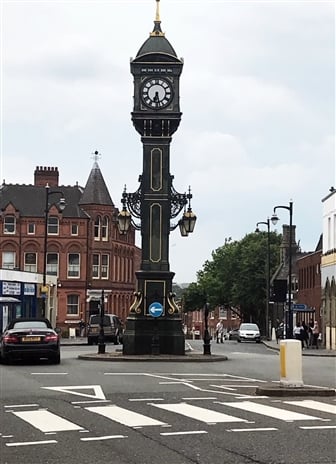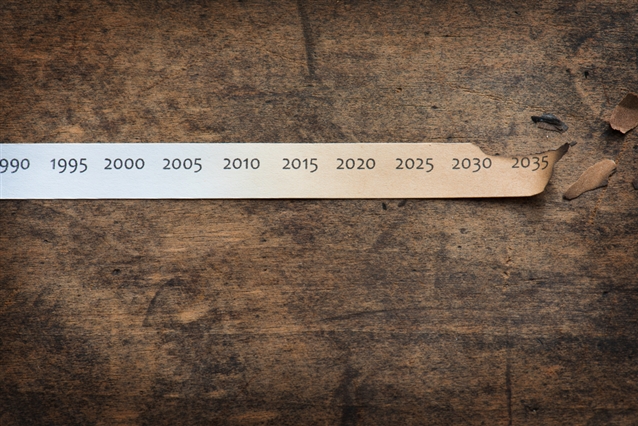Birmingham Jewellery Quarter: the History
From its humble beginnings to the regeneration of today the Jewellery Quarter is the heart of Birmingham's jewellery trade and much more.
Being based in the Jewellery Quarter Birmingham, we are part of the history of the area. As you can imagine from the name, the Jewellery Quarter is a hub for fine crafted jewellery, not just in Birmingham but Britain. The Quarter plays a vital part of Birmingham and Britain's history, a history we're proud to be apart of.
Here is a brief history of Birmingham's Jewellery Quarter.
Humble Beginnings
A survey of 1553 named Roger Pemberton as one of the first goldsmiths to set up his workshop in Birmingham.
At this time, Birmingham was still a small market town, known for wool industry, metalworking and leather workshops but nothing particularly special out of the ordinary for any other market town at the time.
While pioneering goldsmiths and tradesmen, such as Roger Pemberton, chose to set up their workshops and forges in Birmingham, the town would not become known for its high craftsmanship and manufacturing for another two hundred odd years till Birmingham and the Jewellery Quarter becomes the hub of industry it is today.
The Peak
The glory days of the Jewellery Quarter came about the 18th and 19th centuries as Birmingham grew and prospered from the Industrial Revolution. From a small market town, Birmingham grew to a large industrial town and with that, the Jewellery Quarter grew.
As Birmingham grew with the boom of the industrial revolution, more jewellers began setting up shop and enjoyed the growth with the city, producing beautifully crafted jewellery. Gold and silver was manufactured in the city during the 19th century at an exceptionally high quality with its own hallmark. These fine gold and silver chains were used for jewellery and watch chains, many now considered extremely valuable.
Craftsmen who worked in small workshops or workshops in their homes soon began building factories and employing large numbers of tradesmen to craft their wares.
As Queen Victoria ascended to the throne and the empire reached all corners of the globe, the jewellers in the Quarter were concerned that the Queen was wearing jewels made in Britain but were spoils of war and came from far corners of the globe. So this group of jewellers presented her Queen Victoria and her husband Prince Albert a number of pieces, valued at over 400 guineas, to convince them to wear British made jewellery.
It is because of their high craftsmanship and mass production, the jewellers, goldsmiths and silversmiths of the Jewellery Quarter surpassed the jewellers in nearby Derby. Also as the jewellery trade in Edinburgh also declined, a large portion of jewellery made in the British Empire came from the Quarter.
Tough Times
By 1920, the Quarter had grown expediently since it's humble beginnings but at this time in it's history, came the tough times.
There was a decline for the goods crafted and made, due to the global economy as well as a change in fashion in society. Businesses began diversifying and explore other opportunities to help them survive. When the Great Depression came, the Quarter was hit hard with several businesses closing down and the region struggling to recover after that.
During the Second World War, the Quarter was mass producing again, except instead of Jewellery, they were manufacturing munitions for the war effort. This led to Birmingham becoming a prime target for the Luftwaffe and large areas of the Quarter damaged during the Birmingham Blitz. Birmingham had over 365 air raid alerts, and 77 were actual raids on Birmingham and surrounding towns. Large number of high explosive bombs and 48 parachute mines landed on the city as well as incendiary bombs.
In 1943, the Birmingham Jeweller's and Silversmiths' Association created to discuss the regeneration of the Quarter due to the damaged caused by the Luftwaffe.
The postwar years were not any better and Jewellery Quarter would see more hard times due to the decline in British manufacturing. While large manufacturing firms closed or went out of businesses, some jewellers survived these harsh times.
Recovery
It wasn't until the late 90s that the Quarter began to recover with a large government initiative to rekindle the region. Working with the local council, various associations and local manufacturers, the Quarter has had a revival and became a community while still keeping to its strong manufacturing heritage.
Today
Though Birmingham's Jewellery Quarter is hardly as big as it was during it's height, we are proud to say we still produce around 40% of all jewellery in the UK.
WIth several buildings becoming listed buildings and attracting hundreds of tourists each year, the Jewellery Quarter is a proud piece of Birmingham.
Did you know?
-
The first FA cup was made in the Jewellery Quarter
-
The first factory mass producing pen nibs was in the Jewellery Quarter, making pens more affordable by reducing the cost by 99.9%
-
The first referee whistle was produced here in 1878 as well as the first police whistle in 1883
-
The whistles for the Titanic were manufactured in the Jewellery Quarter






 5 tips for saving for an Engagement Ring
5 tips for saving for an Engagement Ring 5 Facts About the Jewellery Quarter in Birmingham
5 Facts About the Jewellery Quarter in Birmingham The History of Birmingham Jewellery Quarter
The History of Birmingham Jewellery Quarter Best Wedding Venues In Birmingham For 2022
Best Wedding Venues In Birmingham For 2022